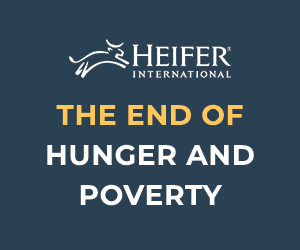



Weekly global protein digest: rebranding milk, Vilsack's comments, international dairy news
Analyst Jim Wyckoff shares an update on global protein newsWeekly USDA US beef, pork exports sales
Beef: Net sales of 13,500 MT for 2023 were up 20 percent from the previous week and 1 percent from the prior 4-week average. Increases were primarily for South Korea (4,900 MT, including decreases of 500 MT), Japan (2,600 MT, including decreases of 400 MT), Canada (1,300 MT, including decreases of 100 MT), Mexico (1,100 MT), and Taiwan (700 MT, including decreases of 100 MT). Total net sales of 100 MT for 2024 were for Canada. Exports of 17,300 MT were up 5 percent from the previous week and 17 percent from the prior 4-week average. The destinations were primarily to Japan (5,000 MT), South Korea (4,500 MT), China (2,200 MT), Mexico (1,400 MT), and Taiwan (1,300 MT).
Pork: Net sales of 53,200 MT for 2023--a marketing-year high--were up 75 percent from the previous week and 69 percent from the prior 4-week average. Increases were primarily for China (20,200 MT, including decreases of 200 MT), Mexico (14,300 MT, including decreases of 300 MT), Japan (3,800 MT, including decreases of 100 MT), South Korea (3,200 MT, including decreases of 1,100 MT), and Colombia (2,500 MT, including decreases of 200 MT). Total net sales of 700 MT for 2024 were for South Korea. Exports of 31,500 MT were down 3 percent from the previous week, but up 3 percent from the prior 4-week average. The destinations were primarily to Mexico (12,500 MT), China (4,900 MT), Japan (4,600 MT), South Korea (2,900 MT), and Canada (1,700 MT
Milk trying to rebrand as a sports drink?
Members of Generation Z buy 20% less milk than the national average so the dairy industry "has embarked on a full-frontal marketing assault" that portrays the dairy product as a sports drink and as the beverage of gamers, the New York Times reports.
Japan’s worst-ever bird flu outbreak has decimated its poultry flocks and sent egg prices soaring
Now, with more than 17 million birds killed, there’s a lack of space to bury dead chickens.
Big birds
Restaurant companies, including KFC and Chick-fil-A Inc., have come to prize chickens that weigh about 4 pounds, a slimmer bird than the big-breasted varieties that have come to dominate the U.S. chicken industry. Some fast-food chain executives say the smaller-size birds that are often used for sandwiches and chicken-on-the bone offerings are more tender and flavorful than their bigger counterparts, the Wall Street Journal reports. Chick-fil-A, the biggest U.S. chicken chain by sales, has long relied on small birds for its sandwiches. However, rising demand in recent years from restaurants and places like convenience stores — coupled with chicken companies’ longtime focus on more profitable big birds — is driving up costs for restaurant operators. Large birds, those weighing at least 7.76 pounds, made up a quarter of the birds killed last year, compared to 6.1% in 2005.
Neutral USDA hogs and pigs report
USDA’s latest Hogs & Pigs Report estimated the March 1 U.S. hog herd at 72.86 million head, up 171,000 head (0.2%) from year-ago. The breeding herd at 6.127 million head increased 0.5% and the market hog inventory rose 0.2%. All of those categories were in line with the average pre-report trade estimates. Market hog inventories for the three lightest categories were smaller than anticipated, while spring and summer farrowing intentions were lower than expected, but that won’t likely have much if any market impact.
USDA Secretary Vilsack comments on several topics during Senate Ag Appropriations hearing
Some highlights:
- Said USDA deserves more funding rather than the across-the-board cuts that some Republicans have proposed. “This budget is at a critical point, a transformational point,” Vilsack said, adding he is disturbed by proposals from Republicans if Congress is to agree to raise the debt ceiling.
- SNAP/farmer credit. The “most conservative” proposals from Republicans, Vilsack said, would result in 250,000 mothers and children not getting food assistance through the Supplemental Nutrition Assistance Program for Women, Infants and Children (WIC), 40,000 rural rental units for lower income people being lost, 84,000 farmers not getting technical assistance and 6,600 farmers not getting the credit they need to stay in farming.
- Farm income. Vilsack again noted that despite record farm income in recent years, 50% of farmers did not make a profit and 40% made most of their money from off-farm jobs, leaving only the 10% of farmers with more than $1 million in sales to make substantial incomes from farming and ranching.
- Federal pay scales. Vilsack said federal pay scales are not competitive with the private sector, adding that the Farm Service Agency has a hard time retaining loan officers and said the Animal and Plant Health Inspection Service has the same problem with veterinarians. Vilsack said the problem is not limited to USDA but is a government-wide problem. Vilsack said he asked the Office of Personnel Management to provide a better understanding of how to reclassify some positions to be able to recruit employees.
- School meals. Sen. Susan Collins (R-Maine), ranking member on the full Senate Appropriations Committee, said school food service directors in her state have told her that USDA’s proposed rule to reduce sugar and sodium in school meals will result in foods that “won’t taste like anything” the students are used to eating and will end up in garbage cans. “An uneaten meal is not nutritious,” Collins said. Vilsack said USDA has reached out to school food service professionals, calling them “heroes during the pandemic,” and signaling there would be an announcement this week of an extension of the comment period on the rule. He further said that many of the reduced-sugar products are already in the marketplace and used in the adult and child care program, and said some of the problem should be addressed by a longer implementation period and grants to rural schools.
- Concentration in cattle industry. Sen. John Hoeven (R-N.D.) said, “We have to do more to address the concentration in the slaughter industry, particularly in cattle,” and said he hopes to make the cattle contract library permanent in the new farm bill. Hoeven also noted concerns about the cost of cattle identification tags.
USDA weekly dairy market report
CME GROUP CASH MARKETS (3/31) BUTTER: Grade AA closed at $2.3975. The weekly average for Grade AA is $2.3815 (+0.0035). CHEESE: Barrels closed at $1.8075 and 40# blocks at $1.8500. The weekly average for barrels is $1.9000 (-0.0535) and blocks, $1.9685 (-0.0605). NONFAT DRY MILK: Grade A closed at $1.1600. The weekly average for Grade A is $1.1510 (-0.0035). DRY WHEY: Extra grade dry whey closed at $0.4475. The weekly average for dry whey is $0.4440 (-0.0010).
BUTTER HIGHLIGHTS: Cream is available for butter production in the Central and West regions, while availability varies in the East. Contacts in the East say spring flush will relieve the current tightness of cream for butter makers present in some parts of the region. Butter production is mixed in the East as some manufacturers say they are steadily churning, and others say labor shortages are causing them to operate reduced production schedules. Butter makers are actively churning in the Central region, while production is steady to strong in the West. Demand for butter is softening in the Central region following more active sales in late February and early March. A combination of strong production and softening demand is contributing to growing inventories in the Central region. In the East, demand for butter is steady to increasing from both retail and food service customers. Contacts in the West report steady retail demand but softening food service sales. Asian purchasers are actively ordering loads of butter from the West. Bulk butter overages range from 0 to 10 cents above the CME market value, across all regions. Across all regions, bulk butter overages range from 0 to 10 cents above market.
CHEESE HIGHLIGHTS: Milk is available for strong cheese production in the Northeast and West. In the Midwest, milk remains accessible, though availability varies in different locations. Cheesemakers in the region are running active production schedules, and some say they are operating six to seven days a week. Demand for cheese varies throughout the Midwest. Domestic demand for cheese is steady in the West, and contacts report strong sales to customers in Asian markets. Some western contacts note export demand to other regions is steady to softer, as cheese produced domestically is priced uncompetitively compared to cheese produced in Europe and Oceania. In the Northeast, demand for cheese is steady to strong from both retail and food service customers. Cheese inventories are steady in the Northeast and available to meet current spot purchasing demands in the West.
FLUID MILK: Milk output is steady or trending higher throughout much of the country. Flooding and overflowing rivers are creating challenges for some dairy farmers in California. Some dairy processors in the state report flooding has caused transportation delays and power outages, reducing their output capabilities. Class I demand is steady to lighter in California as some educational institutions have time off in the coming weeks for spring break. Bottling demand has also softened in the Northeast and Pacific Northwest as purchasers in those areas prepare for upcoming spring breaks. Contacts in the Midwest report educational institutions’ spring breaks are contributing to dips in Class I demand in some areas but say overall bottling orders are steady. Cheesemakers in the Midwest are obtaining Class III milk from $11 to $3 under Class price, though contacts report more volume is moving near the higher end of the range for the first time in several weeks. Downtime at drying operations in the East and Midwest is contributing to increased condensed skim availability. Condensed skim availability is mixed in the West, while cream remains available in the region. In the Midwest, cream is becoming more available, and multiples moved lower this week. Some contacts report hearing offers for cream from the Eastern region; this is unusual as Midwestern contacts typically obtain cream within the region or from the West. In the East cream inventories vary, with some stakeholders reporting tightness. Cream multiplies for all Classes are 1.15 – 1.32 in the East, 1.20 – 1.28 in the Midwest, and 1.00 – 1.22 in the West.
DRY PRODUCTS: Prices for low/medium heat nonfat dry milk (NDM) moved lower across all facets in the Central and East regions. The price range and mostly price series saw similar downward movement in the West, but the bottom of the price range shifted upward. Demand for low/medium heat NDM is light in the West and market activity is somewhat slow in the Central region. High heat NDM prices were unchanged in the Central and East, amid a slow trading week. In the West, high heat NDM prices moved lower at the top of the range, while the top was unchanged. Contacts note steady demand for high heat NDM in the West, though spot inventories remain tight. The bottom of the price range for dry buttermilk moved lower in the Central and East regions. Demand for dry buttermilk is steady in the East and quiet in the Central region. In the West, dry buttermilk demand is moderate, though export purchasers are less active than buyers in domestic markets. Prices for dry whole milk held steady from last week, as demand and spot trading were quiet this week. Dry whole milk production is slowing and is more limited than contacts typically report. Dry whey prices were mixed as prices fell at the bottom of the range in the West, held steady in the East, and moved higher in most facets in the Central region. In the West, dry whey inventories are balanced to growing, and spot market activity is moderate. Contacts in the Central region say demand is level, while in the East dry whey loads are moving well and spot supplies are tighter. Whey protein concentrate 34% prices moved lower at the tops of the range and mostly price series. Contacts report light demand and strong production are contributing to growing inventories. Lactose prices declined at the top of the range this week. Demand for lactose is limited from spot purchasers and contract purchasers remain hesitant to secure loads for Q2. Lactose inventories are available on the spot market and for Q2 contract purchasing. Prices for both acid and rennet casein have moved in a bearish direction, though contacts expect prices to hold somewhere near current levels going forward. This expectation comes from healthy demand for casein and seasonally active production.
INTERNATIONAL DAIRY MARKET NEWS
WESTERN EUROPEAN OVERVIEW: Milk production is trending higher throughout most of western Europe. In some European countries milk output is higher compared to this time a year ago. While milk production is trending higher in France and southern Europe, overall output is down from 2022. Some contacts indicate they anticipate milk prices to decline as output continues to trend higher.
EASTERN EUROPEAN OVERVIEW: Milk production is trending higher in Poland and other eastern European countries, and industry sources anticipate further growth as spring progresses. The war between Ukraine and Russia is affecting feed and energy prices and presenting challenges to the Ukrainian dairy industry.
OCEANIA OVERVIEW: NEW ZEALAND: New Zealand milk production for February 2023 continued the short trend of the past two months by reporting a 2.3 percent increase on both milk solids and tonnage bases. Significant to the increase was pasture growth conditions through the month and rainfall in drought impacted areas near the end of the month. Looking ahead to March milk production, market representatives expect positive milk output numbers, although areas were hit hard by a cyclone to begin the month. AUSTRALIA: In Australia, the lack of milk production continues as February's milk production dropped 5.3 percent lower, year-over-year, while season-to[1]date numbers point to a 6.5 percent shortfall. The country's export volumes witnessed a further decline in January 2023, as total dairy export volumes moved lower 31 percent year-over-year. On a positive note, there is plenty of available feed. With the tapering of soil moisture levels over the summer months, many farms experienced an extended growth period.
SOUTH AMERICA DAIRY MARKET OVERVIEW: The cessation of the La Nina weather phenomenon, which has been associated with consecutive years of drought in South America, has not given a reprieve to either crop or milk output expectations in large swaths of the pivotal dairy producing/processing countries of the Southern Cone. March has been hot and dry, for the most part. All said, despite expectations of improved conditions due to more neutral weather patterns, regional producers and processors are not predicting any near term improvements. Brazilian imports of dairy commodities have continued to move higher, as milk output is mixed but with bearish expectations related to the aforementioned weather concerns. Cheese, skim milk powder, and whole milk powder moving into the continent's largest country have all seen significant volume increases, according to reports.
US NATIONAL RETAIL REPORT: Total conventional dairy advertisements increased 13 percent this week, but total organic dairy ads declined 25 percent. Ice cream in 48–64-ounce containers was the most advertised conventional dairy product, with a weighted average advertised price of $3.86, up $0.14 from last week. Regular yogurt in the 32-ounce container was the most advertised organic dairy item, with a weighted average advertised price of $4.31, down $0.07 cents from last week.











